
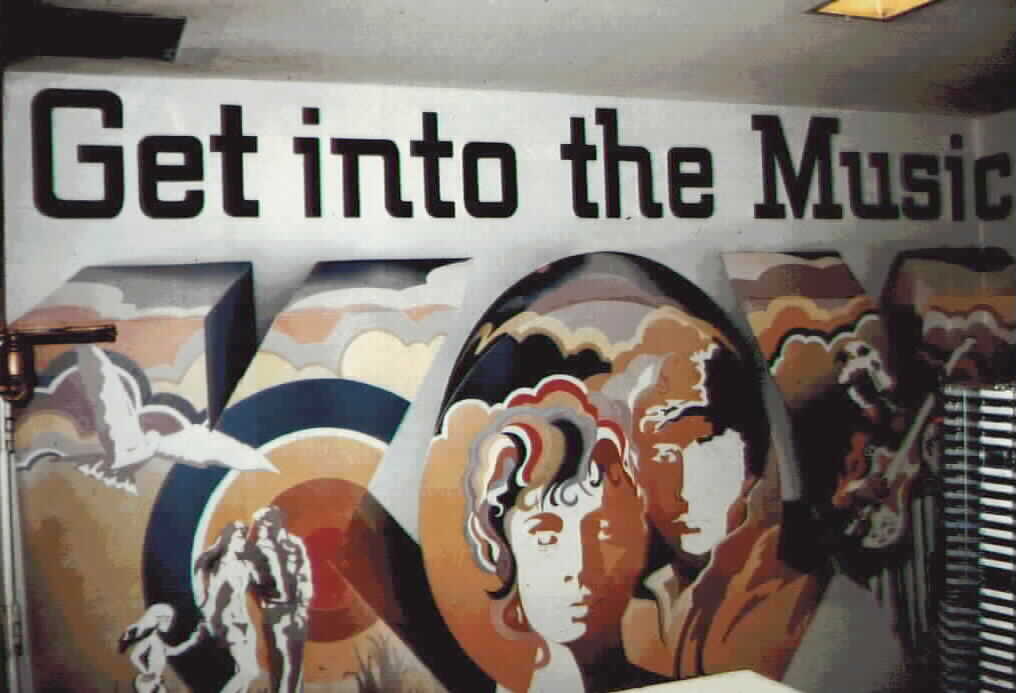


|
KQV is one of the oldest radio stations in the world. KQV signed on as 8ZAE on November 19, 1919 and was owned by The Doubleday Hill Electric Co. In January, 1921 8ZAE became known as KQV, although the FCC did not officially grant the call letters until January 9, 1922. KQV stood for King of the Quaker Valley. In 1944 ownership was transferred to the Allegheny Broadcasting Company. I.D. Wolf, William Walker, Earl Reed and Charles Campbell's company purchased KQV for $575,000. At that time KQV's network affiliation was switched from NBC's Blue Network to Mutual. Si Steinhauser of the Pittsburgh Press filed this story on January 17, 1945. KQV and WCAE Shift Networks. KQV was acquired by the American Broadcasting Company in December of 1957. Fred Remington of the Pittsburgh Press filed this story on Thursday August 29, 1957. ABC Pays $700,00 For KQV. ABC's American Broadcasting Network was running a Live and Lively format. After 5 months, ABC dropped the format. KQV was the first network owned radio station to convert to a top 40 format when it brought the format on January 13, 1958. With the change in KQV's ownership and format, a change of call letters to WASP was considered and then dropped. It was reported by Win Fanning in the October 8, 1958, Pittsburgh Post-Gazette. The Pittsburgh Post-Gazette's Win Fanning previewed KQV's format switch in the October 10, 1958 edition of the Post-Gazette. Storz Broadcasting in Omaha launched the top 40 format. Many of the key people who worked for Todd Storz helped to spread the format. ABC was the first network to adopt the top 40 programing policy. Dale L Moudy a former Storz radio Vice President of Engineering and now an ABC executive was brought in to wire KQV and it's new showcase studios on 7th Avenue and Smithfield Street for top 40. Another Storz veteran Ralph Beaudin was hired from KOWH in Omaha to be KQV's first General Manager during the new top 40 era. Other Storz people helped bring the Storz programing philosophies of Live News at 55, and the top 40 format to ABC. In October 1958, KQV moved into the Showcase Studios. Fred Remington of the Pittsburgh Press filed a pair of stories about the building and opening of the new $85,000 studios. Through much of KQV's top 40 heyday, KQV was owned by the American Broadcasting Company and was a news affiliate of ABC and later the American Contemporary Radio Network. In March of 1974 ABC sold KQV to Taft Broadcasting for $3.5 million dollars. Barbara Holsopple of the Pittsburgh Press filed this story. KQV Sold To Taft. On December 16, 1974, KQV's sale to Taft Broadcasting was completed. KQV brought in the top 40 format on January 1, 1958 and remained that way until October 15, 1975 before the switch to a new All News format. The last night of the top 40 format on KQV was anchored by disk jockeys George Hart and Billy Soule. KQV became affiliated with the now defunct NBC N.I.S. Network (News and Information Service) , instead of music it was all News, Information and Sports. KQV was purchased by Calvary Inc. on February 2, 1982 and celebrated it's 24th anniversary in the news format in October 1999.
|
| DID YOU KNOW
...
KQV was not always the Big 14. That's right ! We all know KQV's at 1410 AM now, but its not the only place that KQV was located at on the AM radio dial. KQV was once located at 833 AM. KQV was at 1090 AM in 1925, 1110 AM in 1927 (actually sharing the dial spot with WJAS) and at 1380 AM in 1931. KQV finally moved to 1410 AM on March 29, 1941. Even KQV-FM (now WDVE-FM) had a different FM dial position before ending up at 102.5. In 1948, KQV-FM was located at 98.1 FM !
|
| THE ORIGINAL
TOP 40 STATION LINEUP OF KQV...
KQV's first air staff as a top 40 station included Chuck Dougherty , Henry DaBecco, Sam Holman, Dave Scott, Roy Elwell, and Jolly Jim McLaughlin. For a list of most of the personalities that worked at KQV over the years go to the KQV Personalities page.
|
| THE FIRST AD
PROMOTING THE NEW LIVE RADIO' FORMAT OF KQV
This is the advertisement promoting KQV's switch in the Pittsburgh Press on Monday January 13, 1958. Note the lineup... Chuck Dougherty at 6 am Don McNeill's Breakfast Club at 9 am Herb Oscar Anderson at 10 am Henry DaBecco at 11 am Jim Reeves at 1 pm Jim Backus at 2 pm Sam Holman at 3 pm Merv Griffin at 7:15 pm Dave Scott at 9 pm KQV combined the new line-up of local Disk Jockeys with ABC radio's lineup of stars ! ! ! Note: ABC is referred to as the American Broadcasting Network and Herb Oscar Anderson of WABC fame is on from 10 - 11am.
|
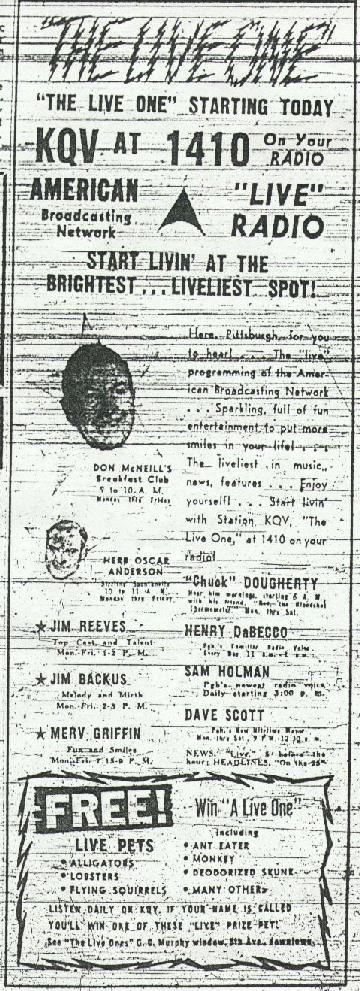
Click on this Pittsburgh Press ad to see in full size ! ! ! |
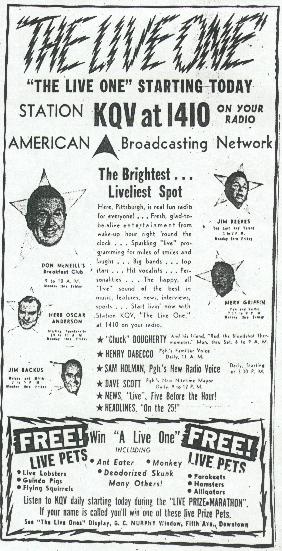
Click on this Pittsburgh Post Gazette to see in full size ! ! ! |
Click on this Broadcasting Magazine ad to see in full size ! ! ! |
| In 1958 after switching to Top 40, KQV was represented by Adam Young Inc. In this ad from Broadcasting Magazine, note the logo has ABN Radio Pittsburgh (American Broadcasting Network) Pictured below are 4 of the ABN stars featured on KQV in January, 1958. |

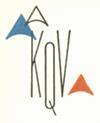 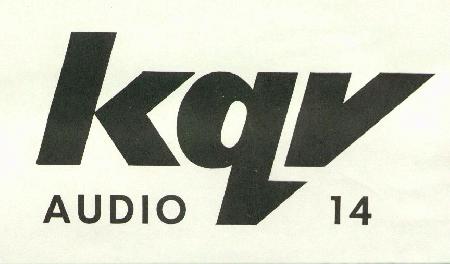 
 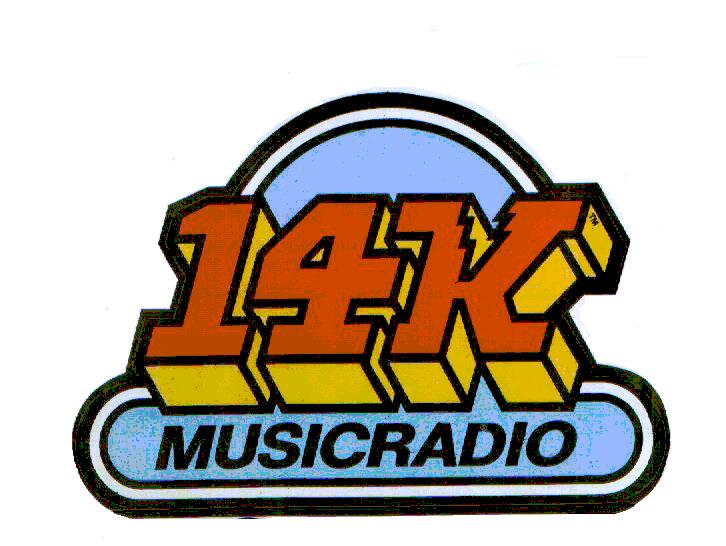 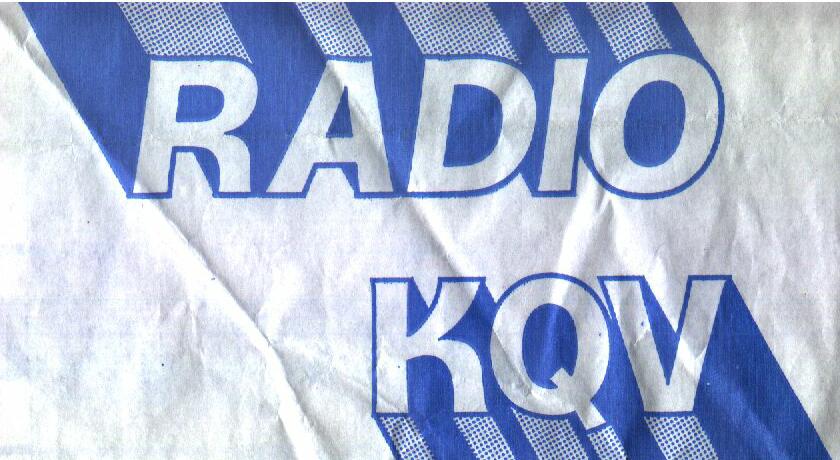
This page updated May 10, 2014
|